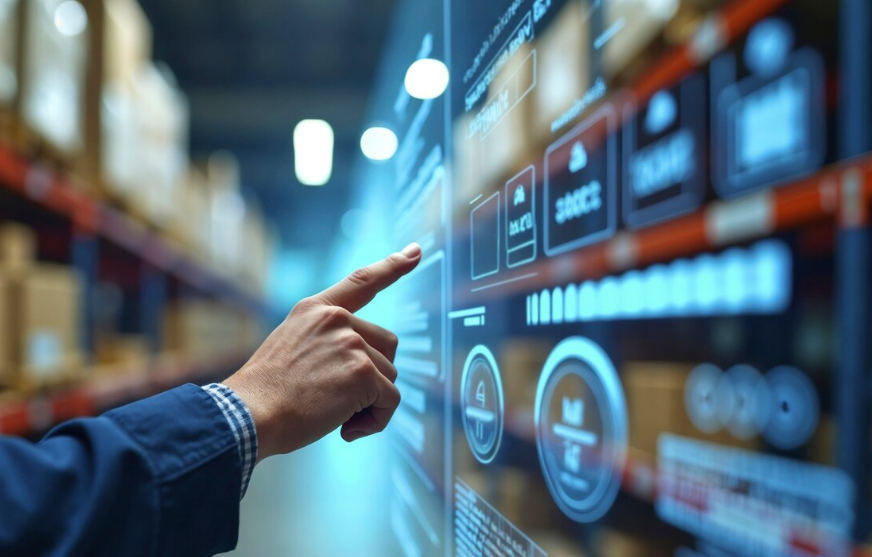The concept of smart cities is rapidly becoming a reality, thanks to the integration of advanced technologies like the Internet of Things (IoT) and Artificial Intelligence (AI). These technologies are fundamentally changing how urban areas function, making cities more efficient, sustainable, and livable for their residents. In a smart city, data-driven insights derived from connected devices and AI algorithms are used to optimize urban services, improve quality of life, and address challenges such as traffic congestion, waste management, and energy efficiency.
In this article, we explore how IoT and AI are working together to transform urban environments, enhance governance, and improve the everyday experiences of city dwellers.
The Role of IoT in Smart Cities
The Internet of Things refers to a network of interconnected devices that can communicate with each other and exchange data. In the context of smart cities, IoT devices—such as sensors, cameras, traffic lights, and energy meters—collect real-time data about various aspects of urban life. This data is then analyzed to provide actionable insights that can improve city management.
1. Traffic Management and Smart Mobility
One of the most visible applications of IoT in smart cities is in traffic management. IoT sensors embedded in roads, vehicles, and traffic lights provide real-time data about traffic flow, congestion, and road conditions. By connecting these devices, cities can better manage traffic patterns, reduce congestion, and improve road safety.
- Smart traffic lights: IoT-enabled traffic lights can adjust their timing based on real-time traffic conditions. For example, they can give priority to lanes with heavy traffic, reducing wait times and improving traffic flow.
- Connected vehicles: IoT also plays a role in the development of autonomous vehicles. Connected cars can communicate with traffic management systems to avoid traffic jams, improve fuel efficiency, and reduce accidents.
These advancements contribute to a more fluid and efficient transportation system, reducing the environmental impact and enhancing the overall mobility experience for citizens.
2. Energy Management and Sustainability
In smart cities, energy consumption is closely monitored using IoT sensors, which can track energy usage in real-time across homes, businesses, and public infrastructure. This data helps city planners and utility companies optimize energy distribution, reduce waste, and enhance sustainability efforts.
- Smart grids: IoT-enabled smart grids allow for more efficient energy management by providing real-time data on energy consumption and identifying areas where energy is being wasted. These systems can automatically adjust energy flow to areas with high demand, helping to balance the grid and reduce outages.
- Smart meters: In residential areas, smart meters can track individual energy usage, providing consumers with insights into their consumption patterns and encouraging energy conservation.
By promoting efficient energy use and leveraging renewable energy sources, IoT helps cities move towards sustainability goals, reduce their carbon footprint, and ensure long-term resource management.
3. Waste Management
Smart cities use IoT to improve waste management by optimizing garbage collection routes and reducing operational costs. IoT-enabled waste bins equipped with sensors can monitor waste levels and send alerts to municipal services when they are full.
- Smart bins: These bins can also differentiate between recyclable and non-recyclable materials, ensuring that waste is sorted correctly before collection.
- Optimized collection routes: By analyzing data from IoT sensors, waste management companies can create more efficient collection routes, saving time and reducing fuel consumption.
This results in cleaner, more efficient urban environments and a significant reduction in operational costs.
The Role of AI in Smart Cities
While IoT gathers and provides data, artificial intelligence is what makes sense of that data and turns it into actionable insights. AI algorithms analyze vast amounts of data collected from IoT devices and make real-time decisions that improve city functions.
1. Predictive Analytics for Urban Planning
AI can be used to analyze trends and predict future needs in a city, assisting urban planners in making data-driven decisions. Through predictive analytics, AI can anticipate issues related to population growth, traffic congestion, housing, and infrastructure.
- Traffic flow prediction: AI can analyze historical traffic data, weather patterns, and special events to predict traffic congestion and adjust traffic signals proactively.
- Housing demand forecasting: By analyzing demographic data, AI can predict areas where affordable housing will be needed in the future, enabling city planners to build new housing units in the right locations at the right time.
AI-driven predictive analytics helps cities allocate resources more effectively and plan for future urban growth.
2. Public Safety and Surveillance
AI is also making a significant impact on public safety in smart cities. AI-powered surveillance systems use facial recognition and anomaly detection to monitor public spaces, identify potential threats, and provide real-time alerts to law enforcement.
- Predictive policing: AI can analyze historical crime data to predict when and where crimes are likely to occur. This allows law enforcement to deploy resources proactively, preventing crime before it happens.
- Crowd management: AI can monitor large gatherings and public events using video analytics to detect crowd behavior patterns, enabling authorities to respond quickly to potential safety concerns.
These AI applications help improve public safety, reduce crime rates, and ensure citizens’ security in urban spaces.
3. AI in Healthcare and Emergency Response
AI also plays a critical role in healthcare within smart cities. With IoT devices continuously collecting data from wearables, smart health sensors, and emergency response systems, AI can analyze this data to identify health trends and make real-time recommendations.
- Telemedicine and diagnostics: AI-powered platforms can analyze data from IoT-enabled health devices to offer remote diagnostics and medical advice to patients, particularly in underserved areas.
- Emergency response optimization: AI can help optimize emergency response systems by analyzing real-time data from traffic sensors, weather reports, and hospital capacities to ensure that the fastest, most efficient response is made in the event of an emergency.
AI in healthcare helps ensure that resources are allocated effectively, public health is monitored continuously, and emergency services are better prepared to respond to crises.
The Synergy of IoT and AI in Smart Cities
The combination of IoT and AI creates a powerful synergy in smart cities, where the continuous flow of data from IoT devices is processed and analyzed by AI to make better decisions. This collaboration enables smart cities to function autonomously, respond to issues in real time, and improve the quality of life for their residents.
For instance, in a smart city, IoT devices may detect a traffic jam, while AI systems can process the data, predict the cause of the congestion, and dynamically adjust traffic signals to alleviate the bottleneck. Similarly, IoT-enabled sensors in waste bins may notify a city’s waste management system, and AI algorithms can optimize the best route for waste collection trucks.
Challenges and Considerations
While IoT and AI offer tremendous benefits for smart cities, there are also challenges to overcome:
- Data privacy and security: With vast amounts of personal and sensitive data being collected, ensuring data privacy and protection is paramount.
- Infrastructure and investment: Developing the infrastructure required to support IoT devices and AI systems can be expensive, particularly for developing cities.
- Interoperability: Ensuring that various IoT devices and AI platforms can work together seamlessly across different sectors and systems remains a challenge.
Conclusion
IoT and AI are at the forefront of transforming cities into smarter, more efficient, and sustainable environments. From improving transportation and energy management to enhancing public safety and healthcare, these technologies are making urban life more livable and resilient. As these innovations continue to evolve, the future of smart cities looks promising, with IoT and AI working hand-in-hand to address the challenges of modern urbanization.


